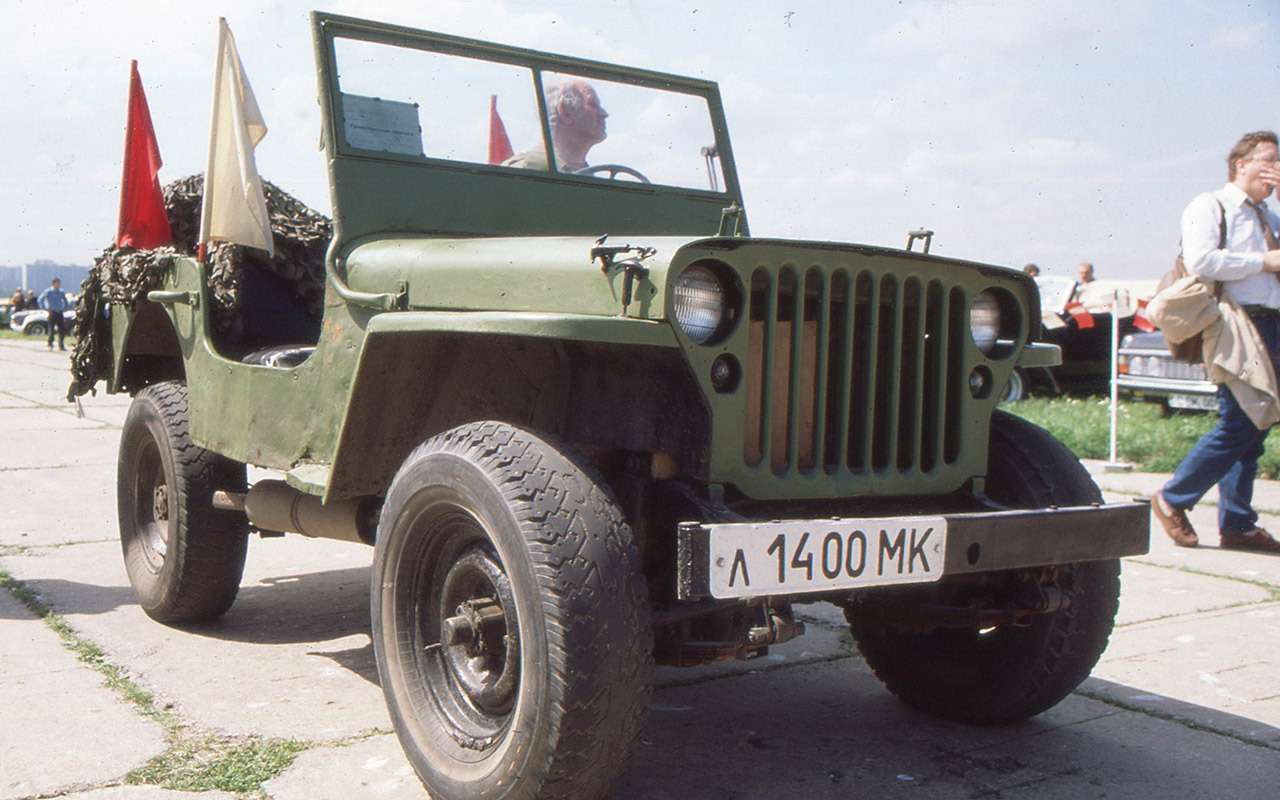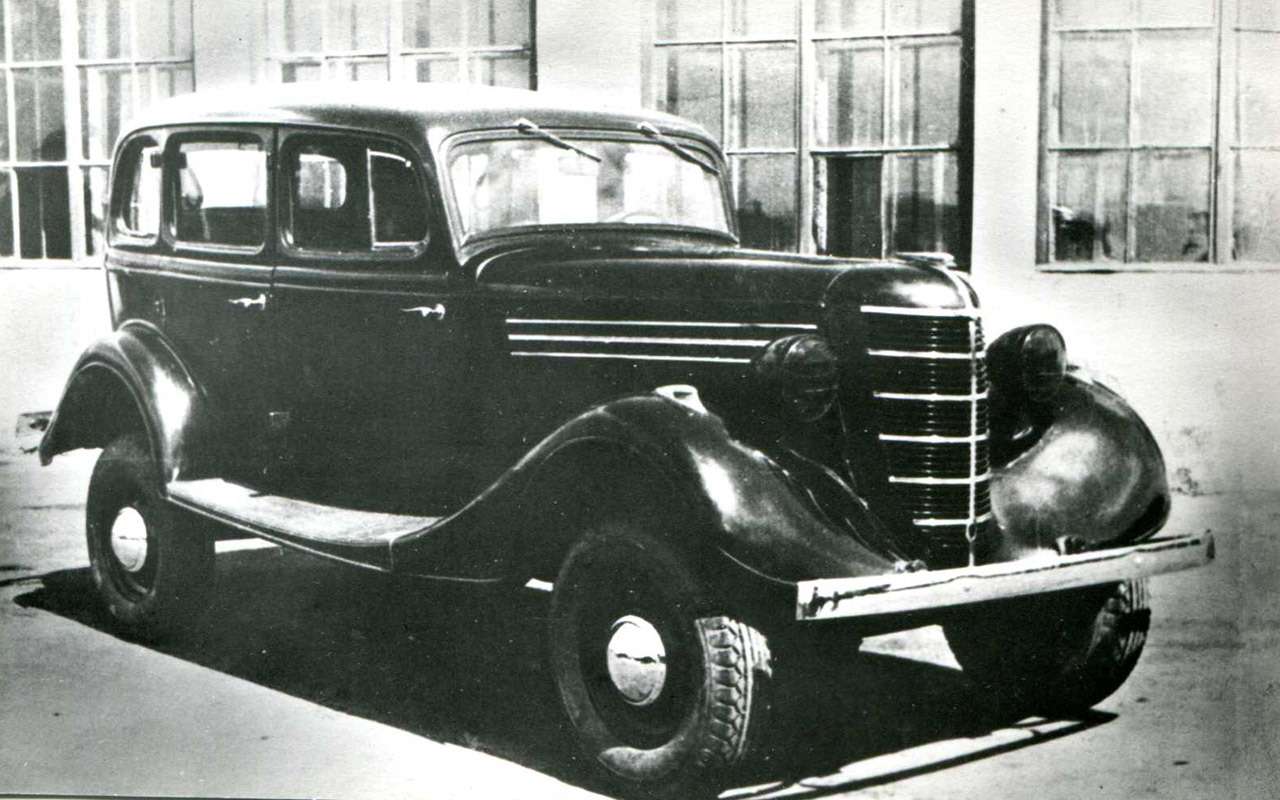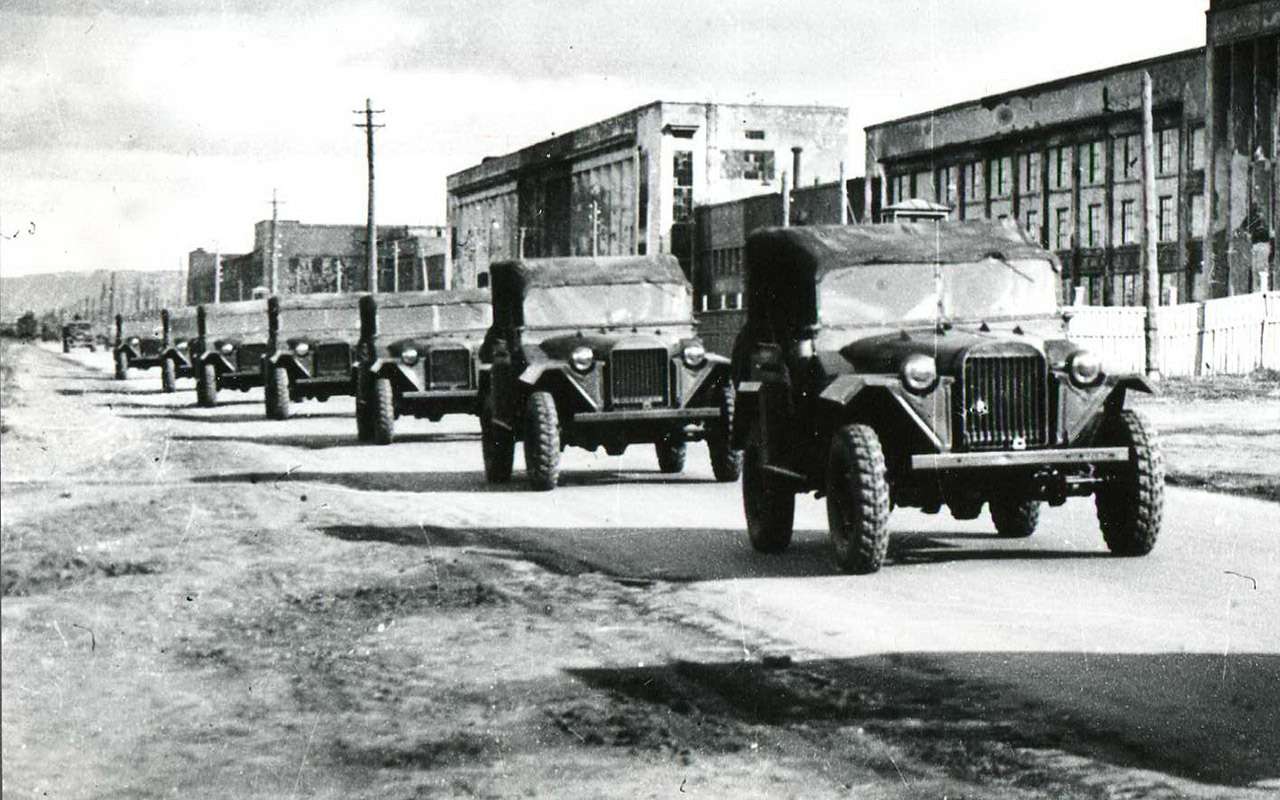commander
The only passenger (personnel) car of the Red Army before the war was the “emka” – GAZ-M1. A mono-drive car was not the best option for the military.
A passenger car with four-wheel drive was already produced at the Gorky factory before the war. They’ve built a whole family: a sedan, a convertible, a pickup. But the first serial GAZ-61 sedans appeared only in 1941. During the entire war, less than 200 of these machines were assembled with a body too complicated for wartime.
True, at the beginning of the war, at the beginning of the war, a cheaper pickup truck with a simplified cabin without a roof and doors, GAZ-61-417, was made on the basis of a sedan. But by 1941 they were able to produce less than four dozen pickup trucks.
The four-wheel drive GAZ-61 with a “six” of 76 horsepower was produced in scarce quantities.
In 1941, the GAZ-64 was urgently prepared for production – a real SUV with the most simplified body and a 3.3-liter four-cylinder engine with a power of 54 horsepower. – a command vehicle and a tractor for light weapons. But the factory produced such machines with difficulty. In addition, GAZ-MM trucks, three-axle GAZ-AAA and light tanks were more important. Until 1943, only 762 GAZ-64 vehicles were built.

From 1943 they gradually began to produce the modernized GAZ-67, from 1944 – GAZ-67B. Before 1945, however, fewer than five thousand cars were built.

And the American Willys MB became the main command vehicle of our army. Under the Lend-Lease Agreement, about 40,000 Jeeps were delivered to the USSR. Drivers liked the agility of the car, thanks to a 60-horsepower engine, which was much easier to drive than the GAZ-67, had excellent hydraulic brakes and a reduction gearbox.
Like the GAZ-67, which was produced before 1952, American cars after the victory worked for decades in Soviet institutions, and then for private dealers.
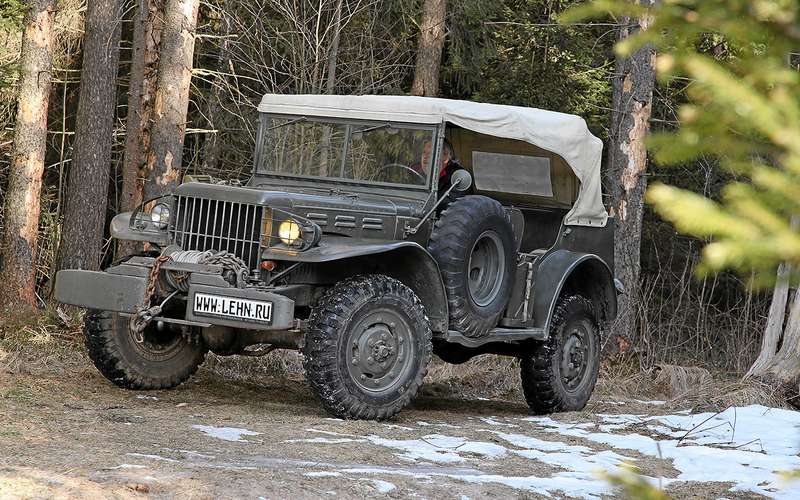
American Dodge WC series cars were also conditional cargo passengers. We called them “Dodge three-quarters”, for a 750 kg load capacity. The machines were equipped with 6-cylinder engines of 3.8 liters with a power of 79-99 horsepower.
20-25 thousand finished cars and car kits were delivered to the USSR. In the Red Army there were mostly open cargo passengers, with benches in the back of a Dodge WC51. But command vehicles with a light superstructure also served. These carried Soviet generals and marshals.
conscription
The basis of the military park of the Red Army (as well as the Wehrmacht) were civilian trucks, more or less adapted to the needs of the army.

The most popular car of the USSR in the early 1940s was the famous truck – GAZ-MM (until 1938 GAZ-AA) – a modernized Ford of the late 1920s. The engine developed only 40-50 horsepower. An important advantage of the ugly car, however, was its extreme simplicity and with it the possibility of quickly bringing the truck into working condition literally in the field. For this one and a half and respected. From 1938 to 1945, about 400 thousand cars were made.

The second mass-produced Soviet truck was the ZIS-5, also known as a three-ton truck, or Zakhar Ivanovich, as the drivers respectfully called the truck. The 5.55 liter “Six” developed 73 horsepower.
In addition to the Moscow ZIS, three tons were made during the war by Ulyanovsk UlZIS and UralZIS in Miass. Equipment from Moscow was evacuated to these rear cities in 1941. During the war, some trucks and three-tons were built with wooden cabins and simplified wings, with reduced headlights and sometimes even with one headlight.
allies
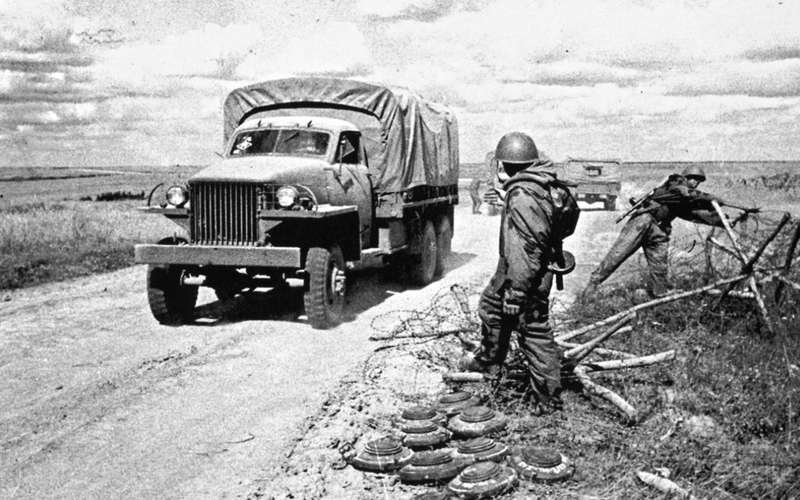
Under Lend-Lease, many different middle class trucks were delivered to the USSR. Both civilian – pre-war designs, and made especially for the military. By the way, some cars came in the form of car kits, which were turned into cars in our factories.

The most famous and beloved of the American Red Army trucks was the Studebaker US6. About 200-220 thousand cars with the wheel formula 6×6 and 6×4 were delivered.
The payload was 2500 kg (in the Red Army for fixed roads loads up to 4000 kg were allowed), the 6-cylinder engine developed about 87 horsepower. (93 hp SAE). The gearbox is a five-speed gearbox, and on trucks with four-wheel drive there was also a reduction gearbox.

Many – about 48 thousand – in the Red Army there were also Chevrolet trucks of the G 7100 family. In particular, such cars were assembled at GAZ. In terms of payload, the car turned out to be equal to our truck – 1500 kg, but it was four-wheel drive and had an 83 hp 6-cylinder engine.
heavy trucks
Soviet industry did not produce heavy trucks before the war. Except for a small number (only 288 units) of eight-ton Yaroslavl YAG-10s with American Hercules engines of 93 hp.

The lack of trucks of this class was compensated by foreign models. For example, the Diamond T980 is a tractor that pulled trailers up to 10,000 kg. Some of the nearly 500 trucks with 11-liter engines of 150 horsepower brought to the USSR worked in the national economy after the war.

The Mack NR series also belonged to the same class. Machines with a load capacity of 10,000 kg had a 131 hp engine. In total, more than nine hundred Mack trucks of the NR9 (1943-1944) and NR14 (1944-1945) versions were brought to the Union.
It was the American models of this class that immediately after the victory became the starting point for the creation of Yaroslavl heavy trucks.
Thanks for the win!
Fortunately, many vehicles from the war, or at least their post-war counterparts, including American SUVs and trucks that worked on the roads of the USSR many years after the victory, have survived to this day. And many of them even work!
- “Driving” can also be read on Viber.
These were mass-produced, pre-war models that went into production after 1941. As well as many imported cars of different classes.





